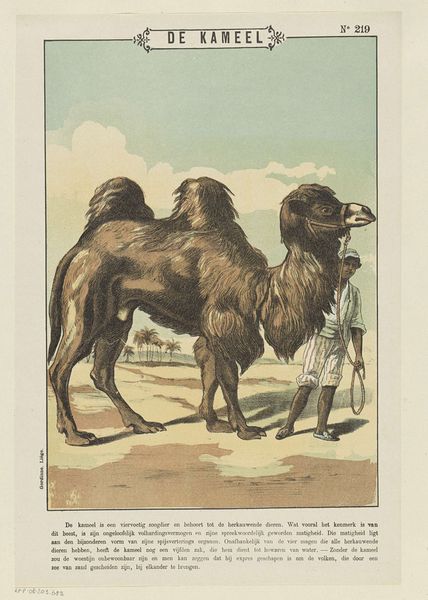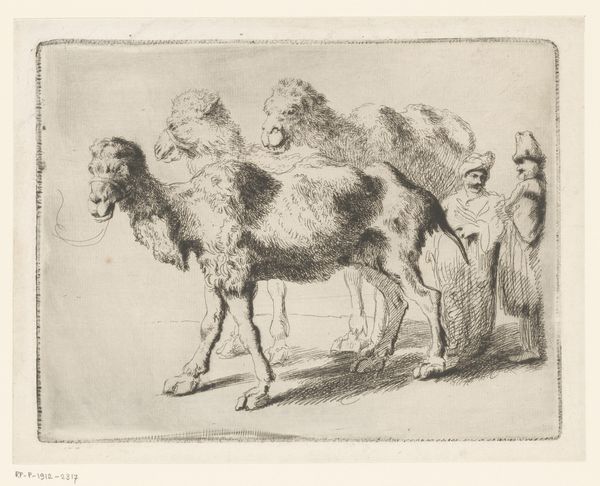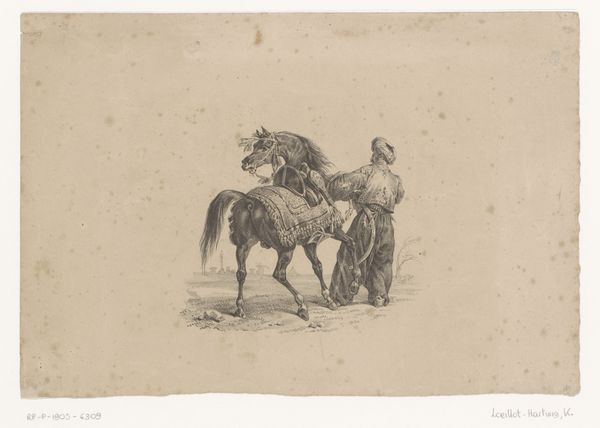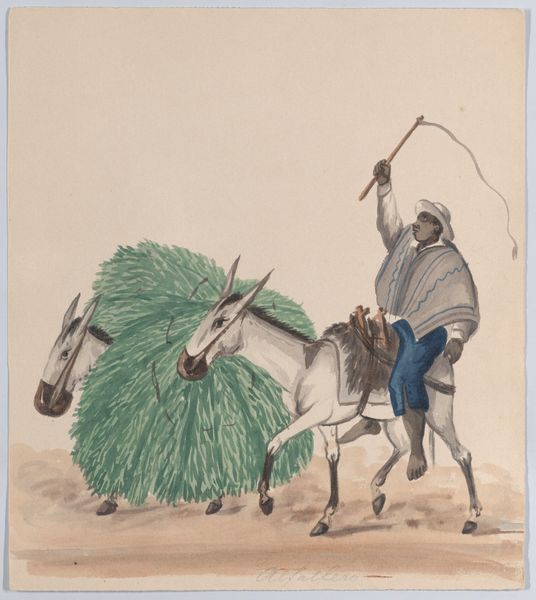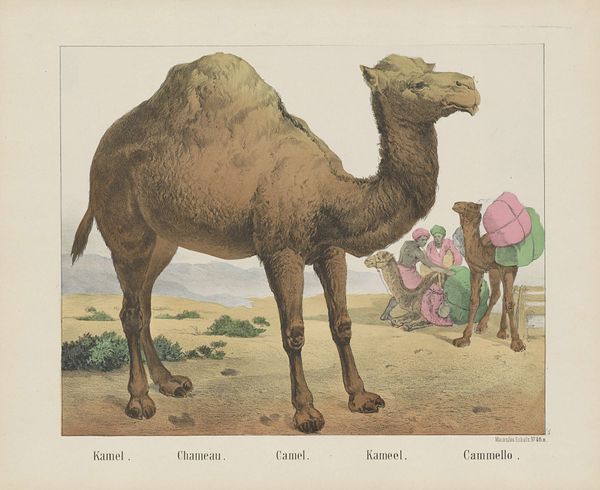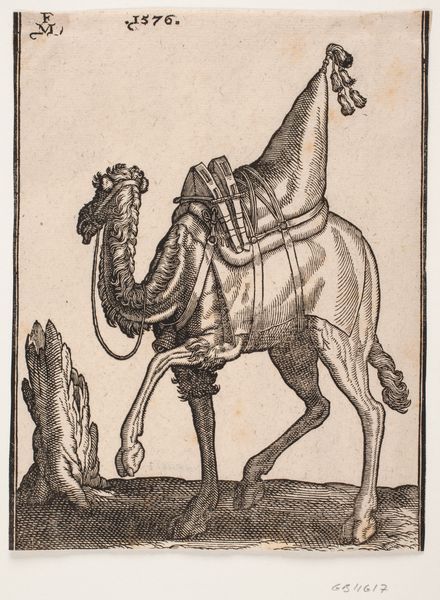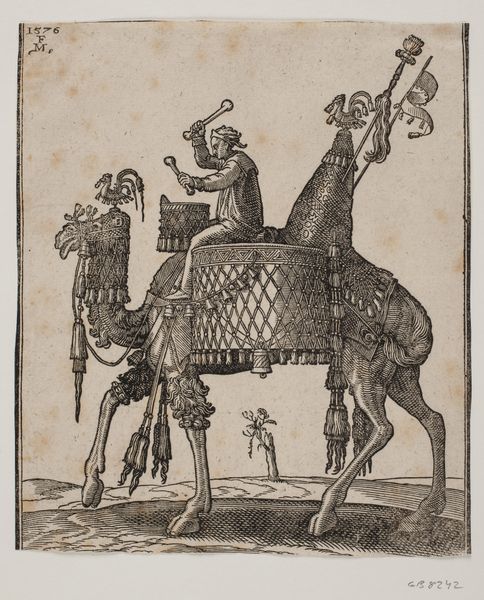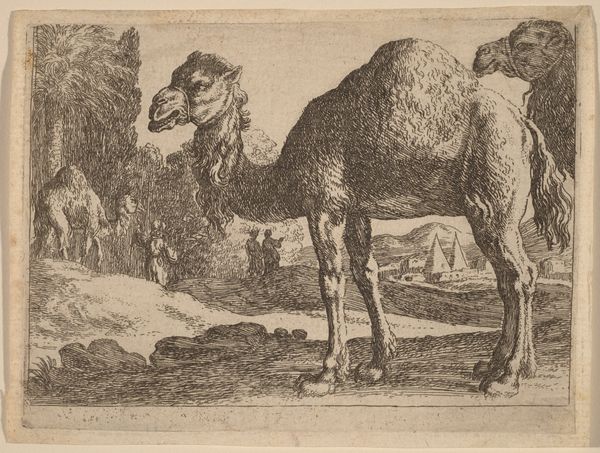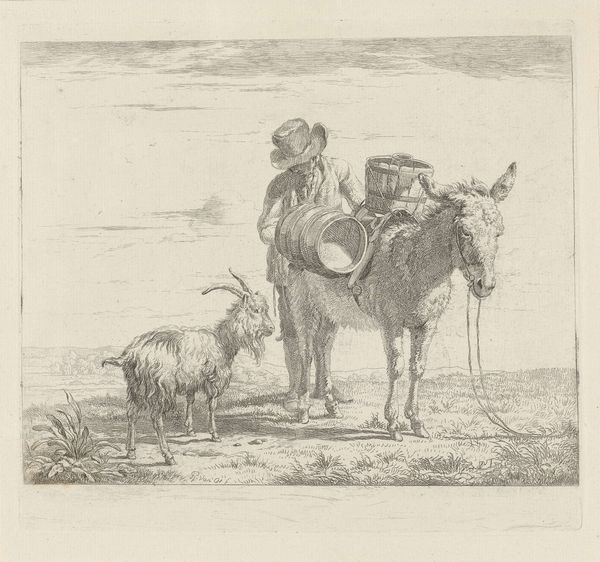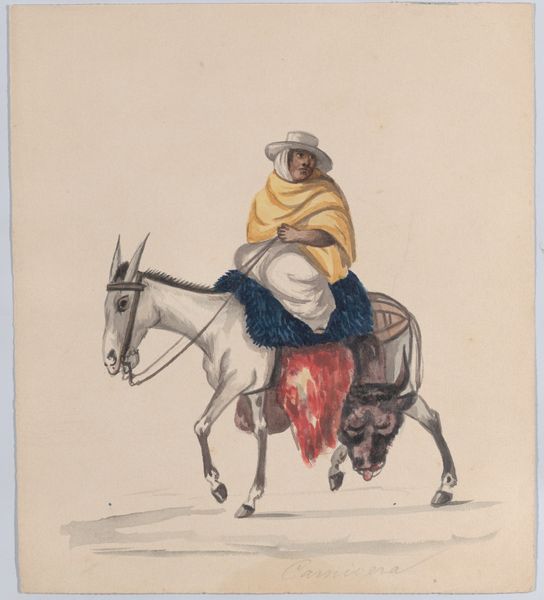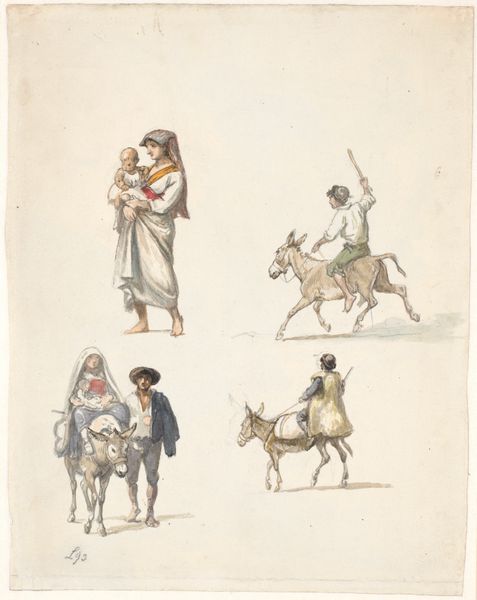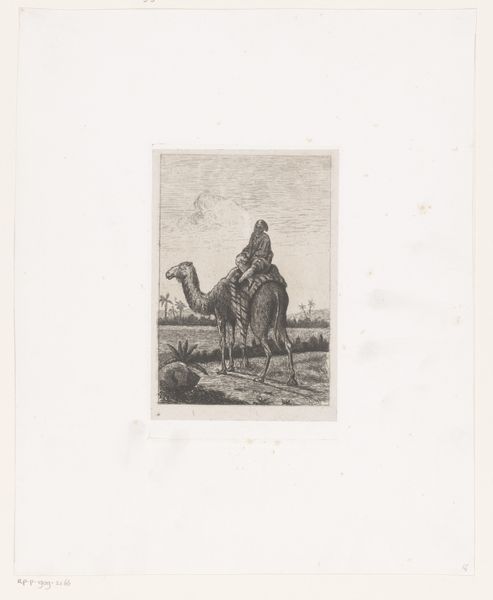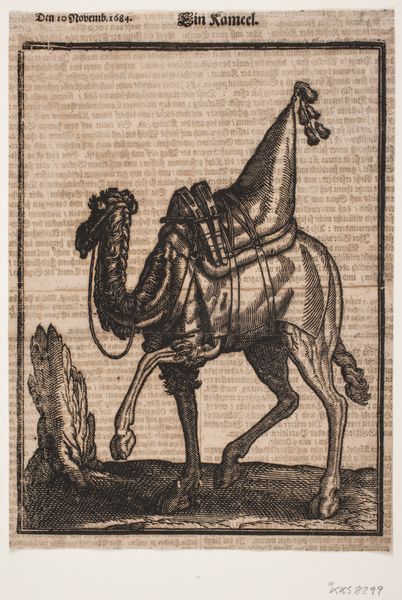
A woman walking with a Llama, from a group of drawings depicting Peruvian dress 1843 - 1853
0:00
0:00
paper, watercolor
#
paper
#
watercolor
#
naive art
#
watercolour illustration
#
watercolor
Dimensions: Sheet: 9 1/16 × 8 1/16 in. (23 × 20.5 cm)
Copyright: Public Domain
Editor: This watercolour by Francisco Fierro, created sometime between 1843 and 1853, is called "A woman walking with a Llama, from a group of drawings depicting Peruvian dress". It’s a simple, charming scene. I’m curious – what do you see beyond its apparent simplicity? Curator: I see a window into a specific moment in Peruvian history. Fierro, as a Costumbrista artist, documented everyday life. But his work was also consumed and interpreted by a European gaze interested in the exotic ‘other’. Consider the very act of documenting Peruvian dress. It suggests an impulse to categorize, to understand through visual representation, but perhaps also to establish a visual hierarchy. How does that strike you? Editor: I hadn’t considered that aspect of ‘othering.’ So, it's not just a neutral depiction of local customs, but also a demonstration of power through observation? Curator: Precisely. Museums and prints like these played a crucial role in shaping perceptions of non-Western cultures. This seemingly innocuous image reinforces certain power dynamics, with the European perspective as the implicit standard. Who was this image intended for, and how did that context influence its creation? Editor: The work itself appears quite… quaint. Did that 'naive' style play into this dynamic at all? Curator: It absolutely did. That so-called "naive art" aesthetic further reinforces a sense of distance and difference, essentializing Peruvian identity for consumption abroad. The artwork served specific cultural and socio-political purposes, influencing how Peruvian culture was perceived. Did Fierro have any control over this reception? What can you infer about the context of display? Editor: This gives me a lot to think about. I always looked at art for its intrinsic value, not its societal function. Thank you. Curator: Likewise. Remembering that art operates within larger structures of power changes the way we engage with it. There’s always a story *behind* the image.
Comments
No comments
Be the first to comment and join the conversation on the ultimate creative platform.
